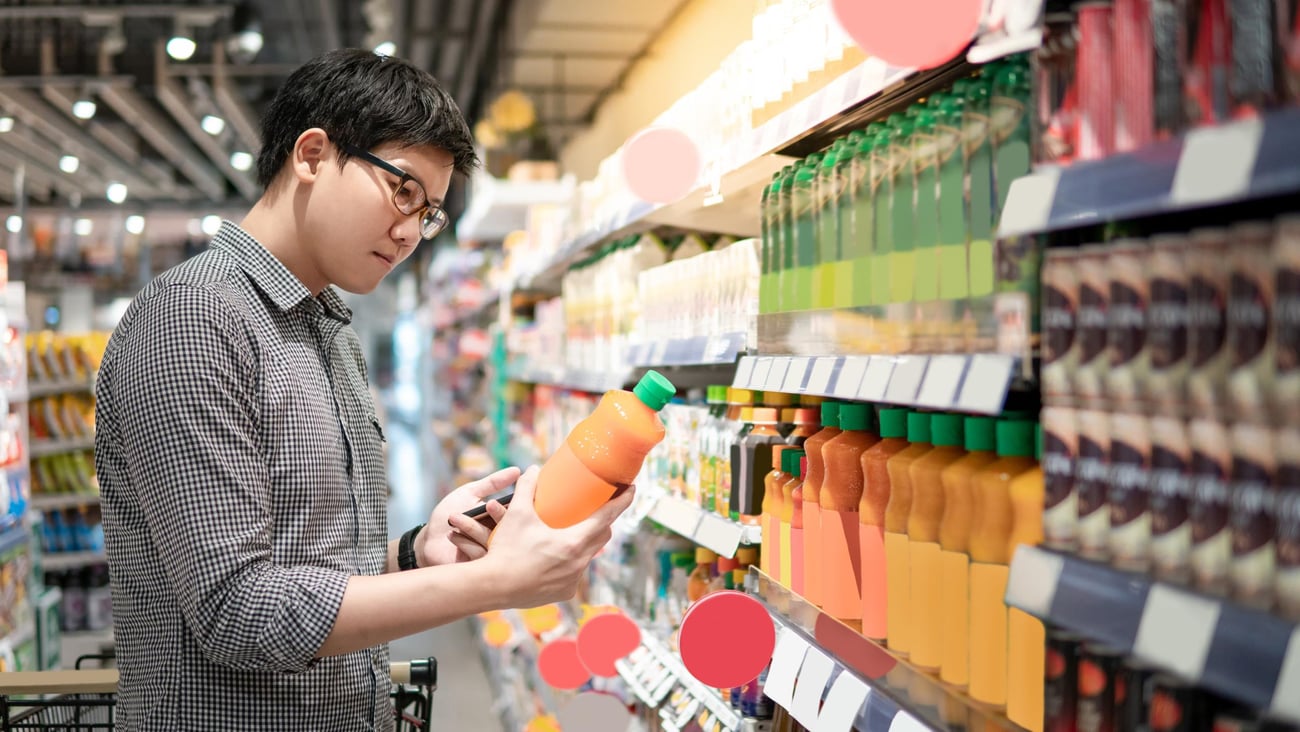
Five DTC Growing Pains for CPGs and What to Do About It
According to a 2020 Cadent Consulting Group report:
Whether it’s for commerce, communications, comparison shopping, or research—consumers and shoppers are online. Data indicates that 80% of shoppers have shopped online in the past month, and that online behavior cuts across all generations. Manufacturers and retailers alike are seeking to develop capabilities [to support ecommerce], but some are more ready than others. One thing is for certain—it is having an effect on how we go to market.
In response to this massive shift toward online behaviors, CPG brands continue to invest in and expand their direct-to-consumer (DTC) strategies and digital capabilities. Just this week as we were working with a global CPG food manufacturer to help define the company’s DTC strategy, the CIO asked us to define the most challenging growing pains in the DTC channel for our industry. And thus, this blog post was born. As we dive in and explore the top five challenges, we’ll also give you a few recommendations to overcome the challenges.
Challenge #1: Low Profitability by Selling Products Designed for Retail in a DTC Channel
From a P&L standpoint, many CPGs initially don’t find their DTC channel to be highly profitable. This dilemma usually occurs because the brand hasn’t designed products specifically for the ecommerce channel. Instead, they try to sell existing retail channel products in the DTC channel, and there may be high packaging and shipping costs that erode margins. Therefore, if you want to create a profitable DTC channel, you have to design SKUs/ASINs that make economic sense for the channel. For example, you don’t necessarily need decorative packaging in an ecommerce channel because the package doesn’t have to communicate to consumers from the shelf. Instead, the product detail web page and consumer reviews attract buyers to your product. However, you will likely need to revamp the size, quantity, or packaging to withstand the rigors of shipping items to a consumer’s home.
This means CPGs need to refactor the planning, sourcing, and manufacturing of products specifically for the ecommerce channel. Digitally native brands have designed their products for ecommerce from Day 1, and they typically use contract manufacturing and lower cost source materials. Meanwhile, big CPGs usually manufacture products in-house which creates higher overhead costs.
Recommendations to overcome the challenge:
- Look at new ways to repackage items for more economical shipping to consumers. Some companies ship bulk quantities of products to other facilities where the items are re-packaged in smaller quantities for DTC channel-specific SKUs.
- Consider creating a unique team or business segment that licenses product brand names and formulations for the sole purpose of creating ecommerce-specific SKUs/ASINs.
- CPGs tend to think big—about scale—and to be successful with DTC ecommerce, you have to think on a much smaller scale.
Challenge #2: Consumer Acquisition and Retention in the DTC Ecommerce Channel
Attracting new customers in a DTC channel is a huge challenge for CPG manufacturers. It’s hard to get customers to shop on a “new” ecommerce website to buy a single product in a category, like soda. For example, a consumer isn’t likely to buy one or even a few 2-liter bottles of soda on a branded beverage website. However, shoppers may add a bottle of soda to their cart if they are buying several other items on the same website (think shopping basket). From a retention perspective, CPG brands are also competing with traditional grocery stores and other brick-and-mortar grocery outlets (e.g., Target and Walmart) that can offer fresh food items, like vegetables, seafood, and deli meats. While ecommerce was convenient during the height of the COVID-19 pandemic and still will be the preference for some people, many shoppers are back in traditional grocery stores as evidenced by the Top Grocery Trends of 2021 from Supermarket News.
Recommendations to overcome the challenge:
- Implement a paid media ad strategy to target your ideal consumers and drive them to your DTC ecommerce website.
- Focus on the customer experience and provide relevant earned media content on your website and social media channels. With that said, this approach takes effort and resources to produce content as well as time, patience, and fine-tuning to generate higher search ranking results and generate a sizable social media following.
- Investigate new personalization options as data/analytic advancements are now delivering faster, more dynamic customer experiences—more on this later
- A specific point for beverage or single-product commodities, you may want to offer a broad range of items on your DTC ecommerce platform so consumers can conveniently buy more than one product category when they shop. Some of our customers in this space are partnering with other CPG brands to offer basket items.
Challenge #3: Last-mile Fulfillment Logistics and Costs to Deliver to Consumers Instead of Retailers
Since most large CPG companies are not set up to deliver small product quantities to consumers (versus the cases, pallets, and truckloads they deliver to retailers), the “last mile” delivery logistics and costs can be a major factor in the success and profitability of a DTC channel—especially since 40-50%+ of supply chain costs are in the last mile according to a Capgemini Last Mile Delivery Challenge study and since shoppers have come to expect relatively inexpensive, or even free, shipping costs and speedy same-day, next-day, or 2-day deliveries.
Recommendations to overcome the challenge:
- Consider a micro-fulfillment center concept or a “warehouse within warehouse” at an Amazon fulfillment center so products are stored and fulfilled across different geographies closer to consumers to speed delivery timeframes.
- Implement a distributed order management system to track inventory and fulfill orders from physical retail stores.
- Redesign packaging and quantities to eliminate weight and air to reduce shipping costs.
Challenge #4: Difficulty Providing Data-driven Personalization
Because CPG companies have historically been a step away from the consumer with retailers as the middleman, many CPG brands struggle to gather and analyze consumer data. Although brands purchase third-party data from agencies and other syndicated data sources, it’s difficult for CPGs to get holistic insights into consumer purchase behaviors and preferences. Meanwhile, consumers have come to expect personalized experiences and curated content from DTC brands. This lack of integrated consumer data means many brands can fall short of shopper expectations.
According to an analysis of 29 companies conducted by Forrester in their latest Go-To-Market Review, M&M's has one of the best DTC websites among CPG brands because it offers functionality for consumers to order customized candies, loyalty rewards, and interactive 3D capabilities. In addition, M&M’s has cultivated a large social media following. Coca-Cola has strong discoverability, evident in its appearance near the top of search results on both retailer sites and in search engines. Like M&M's, the soft drink brand can tap into a massive social media following to drive consumer interest. Colgate, the toothpaste brand, scored accolades on the distribution and e-control front for its warnings about "gray market" products on other sites that may be imitation or counterfeit goods—a significant problem with which CPGs increasingly contend. PepsiCo last year introduced two new DTC sites, PantryShop.com and Snacks.com, to seize on pantry-loading trends, and other blue-chip marketers have followed suit.
Recommendations to overcome the challenge:
- Make an effort to collect and consolidate first-party data so your brand isn’t heavily reliant on third-party data sources. The first-party data you collect from consumers will enable you to personalize experiences, content, offers, and product recommendations. For more information on the importance of first-party data, be sure to read these two blogs: Third-party Cookies are Going Away: What Should Retailers Do about It? and Retailers: Become Data Sovereign Before Third-party Cookies Go Away.
- Focus on building a strong social media presence that correlates to the content on your ecommerce website with blogs, consumer stories, videos, and product images.
- Add innovative functionality to your DTC website, like augmented or virtual reality technologies, that enable consumers to interact and engage with your products.
Challenge #5: Consumer Expectations for Sustainable Packaging
An increasing percentage of CPG sales in the U.S. are expected to go through ecommerce channels in 2022. In response, sustainable packaging has become a top priority for many consumers. However, that priority isn’t necessarily reflected by all brands because according to a 2019 study by L.E.K. Consulting, “In a survey of 250 brand owners across the consumer packaged goods (CPG) spectrum, a whopping 75% say they expect to increase packaging spending over the next year.” The same study found that “57% of brand owners say they’re developing packaging that’s easier to open, 51% say they’re working on more single-serve packaging,” and other companies are developing packaging with different formats to match their products’ premium contents. Meanwhile, younger consumers have made sustainability a top priority as evidenced by a Deloitte study in the U.K. that found “Gen Z are adopting more sustainable behaviours than any other groups: 50% reduced how much they buy and 45% stopped purchasing certain brands because of ethical or sustainability concerns.” Sourcing eco-friendly materials with minimal packaging and waste is an ongoing effort for both retail and CPG companies, which is driven mainly by younger consumers. Packaging can be a conundrum for CPG leaders—sustainability is often at odds with functionality, customer convenience, and profitability.
Recommendations to overcome the challenge:
- As you make packaging decisions for a DTC ecommerce channel, carefully consider factors like production costs, waste, eco-friendly sourcing and materials, shipping costs, and consumer perceptions of packaging, and then make the best decisions to balance the competing priorities of profitability, sustainability, and consumer sentiment.
If you’re early in your DTC initiative, be sure to read The Path to Direct-to-Consumer Sales for CPGs to gain more insights into the DTC channel. And, if you’re ready to discuss your DTC initiative, AWS is here to help. Contact your account team today to get started.






